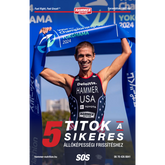CBD revisited
By Dr. Bayne French MD DC
CBD is cannabidiol. We’ll call it CBD because “cannabidiol” is a lot for a mountain fella from Eureka, Montana, to say, spell, or pronounce.
Let’s start with a review. What we’re talking about is cannabis. It’s all about cannabis. Cannabis is not a colloquialism or slang. It’s Latin and a genera of plant in the family Cannabaceae.
Carl Linnaeus, the Father of Taxonomy, was born on a glorious Swedish day in 1707. I know it was glorious because I nailed a giant Brown trout on a Green Weenie that very morning. Carl disappointed his parents by turning away from the priesthood, silly boy, and instead was interested in critters. Clever boy. Although I’m well versed in disappointing my parents, Carl came to understand redemption. His method of categorizing critters has remained durable. So when he puts cannabis as an entire genre, I listen.
But this is where it gets confusing. What about the species? We all know that species follow genus. Well, for cannabis, “species” is in quotations. There is ONE species called sativa. Cannabis sativa L. The L is for Mr. Linnaeus. There are, however, subtypes and subspecies that have been cultivated for various purposes. Are you with me?
So what is “marijuana”? It is a Mexican Spanish term and has no unified definition. It refers to cannabis.
No review would be complete without a discussion about our endocannabinoid system (ECS). Understanding that we each possess this microscopic system is important to view then how CBD and related compounds might benefit us.
The ECS consists of a couple of chemicals that we make in our body (AEA and 2-AG). These compounds interact with docking ports (receptors) on our cells and exert a variety of effects. Other similar compounds from plants also interact with these receptors. Many scientists feel that this system acts as a means of communication between virtually all the cells of our body and is involved in myriad processes involving pain, inflammation, mood, immune function, and metabolism.
So why do we possess this massively complicated signaling system? Because we’re vastly complicated and shaped by survivalistic (notice I didn’t say ‘evolutionary’) pressures.
And we’ve interacted with this cannabis/hemp/marijuana/reefer/dope/grass/Mary Jane plant for a very, very long time, perhaps all starting in the Altai Mountains of Asia. Growing up I obsessed about the Altai Mountains, with its giant rams. And it’s awesome, Weed.
What point am I making? There is something interesting biologically going on here. We are perfectly suited to come into contact with cannabis and its compounds. There is biochemical evidence that favorable things thus occur.
What are those favorable things? Depends on who you talk to. I’m all about the Empiric Method… listening to people, making notes, remembering, observing. In this era of medical snobbery of evidence basis, the power of empiricism is understated.
Dr. William Osler is among the most respected physicians of all time. He’s basically the GOAT but a lousy cribbage player. Dr. Osler lectured and wrote about the power of observation. This takes effort. Observation is calorically costly and takes time, which is why it has fallen out of favor.
What point am I making? Oh yes, something powerful occurs when we sapiens interact with the compounds within cannabis plants. There are over 100 cannabinoids. These chemicals are fats. Lipids. The two biggest players are CBD and THC. They are chemically similar but different enough to exert very different effects. THC is “psychoactive,” meaning it can create a high feeling. CBD can’t do this and isn’t happy about it.
Let’s get to what these compounds can actually do for us. I’ve written about CBD before. I’m sure you remember because they were just so riveting. Is there new stuff? Surely, by now, there’s been a large-scale scale, double-blinded, placebo-controlled trial. Not really. There’s some new stuff, but it still comes down to what makes sense and who you trust. I’ll get back to the trust part later.
Psychosis
Know anyone with Schizophrenia? It’s poorly understood, and like most diseases, it’s nasty. Medical treatment since the 1950s has focused on the chemical dopamine. These medications don’t work well for some patients, and there are many side effects.
Henry Wellcome (yes, two l’s) was a pharmaceutical bigwig and a master croquet player, although I still feel that some of his moves were questionable. The Wellcome Trust was developed in the 1930s and is currently funding a large study through Oxford University. This study is the first of its kind involving 35 centers in Europe and North America.
Lead investigator Dr. McGuire: “Cannabidiol is one of the most promising new treatments for people with psychosis. This study will be the first to evaluate cannabidiol in large numbers of people with psychosis or psychotic symptoms and bring together many of the leading centers working in this area around the world”. Stay tuned.
Anxiety
I know that hardly anyone has stress and worry these days. Still, I want to go over an interesting and recent study on patients with anxiety that also evaluated cognitive (thinking) performance (Dahlgren et al. Communications Medicine. Nov 2022).
Traditional anxiety treatments are largely by prescription. Although these medications can be very effective, they are only available by prescription, may take up to 12 weeks to realize their full effect, and are commonly associated with troubling side effects.
This study was small (only 14 patients) and was “open-label,” meaning the patients and researchers knew they were getting a CBD-containing compound. A full-spectrum compound was administered under the tongue three times daily for 4 weeks. Each dose contained about 10mg of CBD and 0.23mg of THC. Being full-spectrum, all the other cannabinoids, terpenes, and flavonoids from cannabis were included in trace amounts.
Both anxiety and cognition were assessed by patient self-report and also by well-validated assessment tools. There were significant reductions in anxiety, starting as early as one week into treatment, and also improved cognitive abilities. The patients exhibited “significantly faster performance and fewer errors.” For a Eureka Montana mountain person, this seems better than more errors over a longer time.
The treatment was also extremely well tolerated. This study is ongoing with a double-blinded, placebo-controlled stage. This means both researchers and patients don’t know what they’re getting. There will also be a treatment arm comparing just CBD with a full-spectrum compound. Stay tuned.
Athletes
Let’s look at a cute little study from earlier this year. This was a clinical study, meaning it was done on actual humans—ex-elite athletes, in fact, like me.
Hall et al. (J Cannabis Res. March 2023) were seemingly the first to study CBD treatment in high-level athletes. Twenty athletes who played professional US football, track and field, and basketball were recruited. They all had lower extremity injuries. All rehab was stopped, and each athlete used 10 mg twice daily of a topical CBD formulation for their respective injury.
The authors reported: “There was a significant improvement in self-reported pain levels and pain-related disability, including family and home responsibilities, life support activities, occupational activities, recreational activities, self-care, sexual function, and social activities.”
There are numerous limitations of this study. It had a very small sample size and was open-label (the subjects knew what they were getting); the CBD, although the main ingredient, was combined with other compounds; and the outcomes were self-reported, not actually measured or examined. The authors did feel that the data was positive enough to recommend randomized and controlled studies of elite athletes. Like me.
Zebrafish
Here’s another cute study. Why Zebrafish? They were probably on sale.
These cute little fellas were divided into groups and fed different concoctions. Some got CBD, other lucky ones got THC; some ate aluminum, and others CBD and THC with aluminum. Here’s a news flash, aluminum is toxic. We use it in cosmetics, pharmaceuticals, vaccines, cooking utensils, etc., and it kills nerve cells.
The behavior of these fish was observed, like how much they swam, socialized, and explored. Also, levels of chemicals were sampled from the fish. It was found that aluminum was toxic to the nervous system of these fish. Shocking, I know. It was also found that both CBD and THC were protective and actually allowed the aluminum-toxic fish to re-establish their normal behavior, like exploring the confines of their fake ecosystem, biting the fins off others, avoiding getting their fins bitten, and making more Zebrafish, which is pretty much the same thing we’re all doing.
Trust
A South African study (Mouton et al. Phytomedicine. 2023) used high-performance liquid chromatography (HPLC) to look at 16 different CBD-containing products. I really don’t know what HPLC is, but it rolls off my tongue. Only 3 of the 16 CBD products actually contained what was labeled. Meaning that 13 companies were either lying or made egregious mistakes. “This information indicates a significant lapse in quality control measures.”
I’m not done. Johns Hopkins is a literal dude. Not John, but Johns. He was a philanthropist, meaning he had tons of money. He had 10 siblings too. Show-off, I’m stuck with one crazy sister. Compliments of Mr. Hopkins a study in 2022 (Spindle et al. JAMA Network Open. 2022) was done that tested over 100 CBD-containing products. Only 89 listed the total amount of CBD in mg on the label. Of those, only a few contained the actual amount labeled.
There are many other studies that really bring into question the quality and purity of what you think you’re purchasing and consuming.
Conclusion
If CBD were an athlete, it would be an obstacle course racer. It is so eclectic, capable, and able to act on so many different tissues. As a result, there is evidence of it helping with myriad conditions, symptoms, and diseases.
As discussed in the Trust section above, knowing your supplier is important.
CBD can provide a powerful adjunct to other healthful behaviors like proper eating, good cardiopulmonary fitness, restorative sleep, and other supplements. With all things involving our health, there is no time to wait. Disease prevention favors the proactive…those that think, educate themselves, and employ the assistance of metabolically favorable substances.











